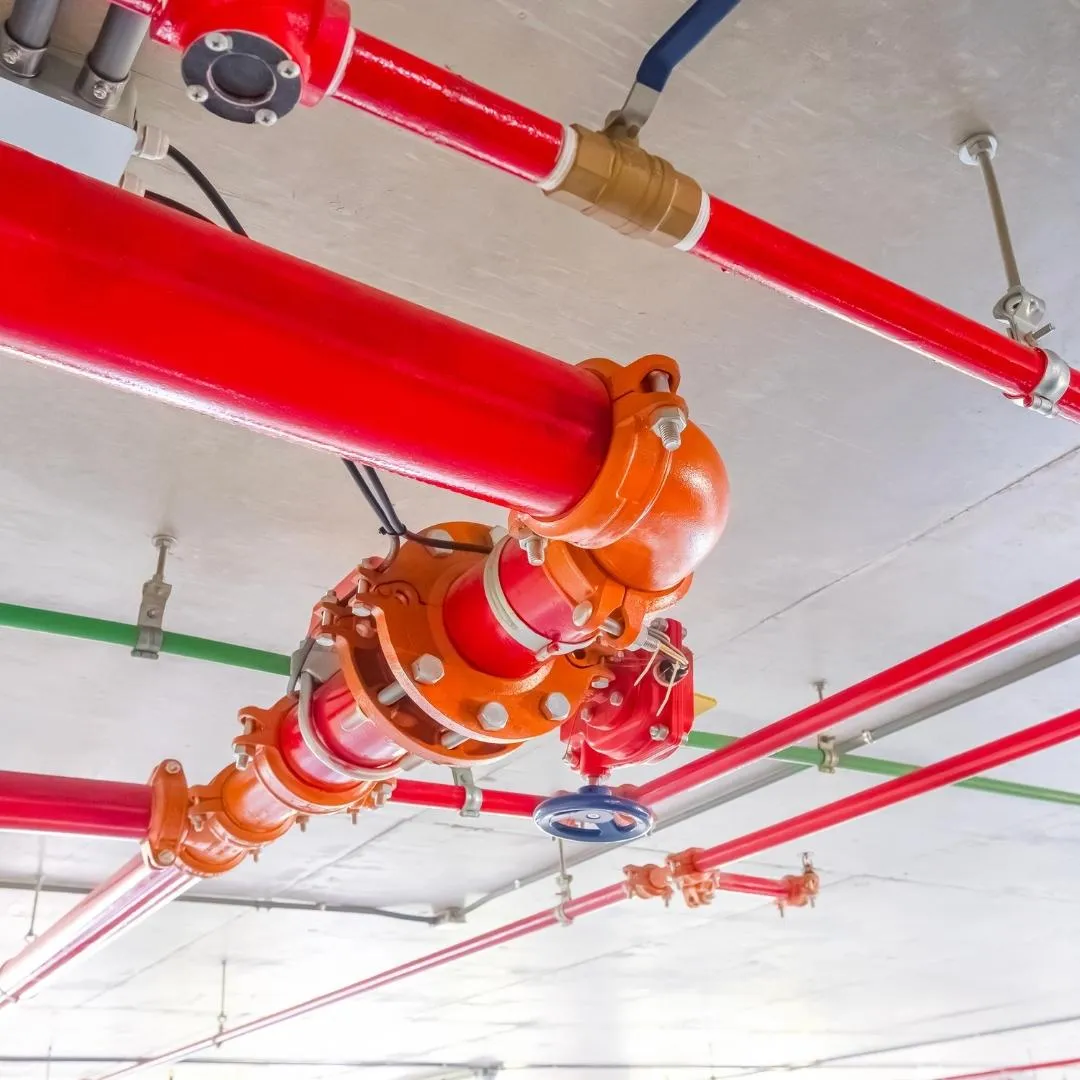SPRINKLER INSPECTION RESOURCES
Sprinkler Inspection Checklist (NFPA 25)
Use this checklist to prepare your site for quarterly and annual sprinkler inspections. It helps your team stage access, cut downtime, and produce photo rich, AHJ ready reports.
HOW THIS HELPS
Why a sprinkler inspection checklist matters
Who this helps
Facility managers, safety teams, and property owners who want predictable scheduling, clear documentation, and fewer re inspections. Works for single sites and multi site portfolios.
How to Use
Review the prep items with your on site contact. Print the checklist or use the spreadsheet log. During the visit, document findings with photos and notes.
PREP & SAFETY
Preparation and safe practices
Pre-Visit Prep
Confirm access to riser rooms, control valves, alarm panels, and the fire department connection.
Stage keys, badges, or escorts for secure areas.
Share recent reports, deficiency lists, and any open permits.
Identify sensitive hours and plan after hours testing if needed.
Verify impairment plans and fire watch procedures if a shutdown may occur.
On-Site Safety
Keep aisles, riser rooms, and exits clear during work.
Keep aisles, riser rooms, and exits clear during work.
Follow posted PPE rules for the site.
Do not silence or disable any device without approval from your monitoring company and the AHJ.
Impairments and Fire Watch
IIf a system is impaired, tag it out of service, notify monitoring, inform your AHJ if required, and set a fire watch until protection is restored. Record the start and end times of the impairment and all rounds performed.
CHECKLISTS
Inspection checklists
Quarterly inspection steps
Verify access and review system type and coverage.
Check control valves are in the correct position and secured.
Exercise alarms, tamper, and supervisory signals as required.
Record main drain test results where applicable.
Inspect visible piping, hangers, and supports for damage or corrosion.
Spot check heads for paint, damage, or obstructions.
Check gauges, note age and pressures.
Document deficiencies with photos and clear notes.
Annual Inspection and Testing
Perform full annual inspection per scope and AHJ requirements.
Test waterflow devices and record times.
Exercise and test control valves.
Test alarm and supervisory functions.
Inspect spare head cabinet and wrench.
Check fire department connection caps, gaskets, and clearance.
Verify signage, the hydraulic nameplate, and system labeling.
Update tags and labels.
Compile a photo rich report and a prioritized deficiency list.
Five Year Internal Inspection
Plan internal pipe inspection and obstruction investigation on the five year cadence.
Coordinate drains, access, and any shutdowns.
Document tuberculation, scale, or foreign material and recommend corrective action.

DOCUMENTATION
Documentation and records
What to document
Date, time window, site, building, and system ID.
System type and device type.
Actions taken and test results.
Deficiencies, priority level, photos, and next steps.
Inspector name, signatures or initials, and the next due date.
Sample Data Log Fields
Site or property, building or area, riser or system ID.
Device type and device location.
Action and result, pass or fail.
Priority, life safety, critical, or maintenance.
Photo file names and notes.
Photo Guidelines
Take wide shots for context and close shots for detail.
Include tags, gauges, and nameplates where relevant.
Name files so they match the device or area in the log.

Services
Services Areas
Resources
Contact Now
Office Location
1502 Mahoning Ave,
Warren, OH 44483
Office Info
330-360-1514